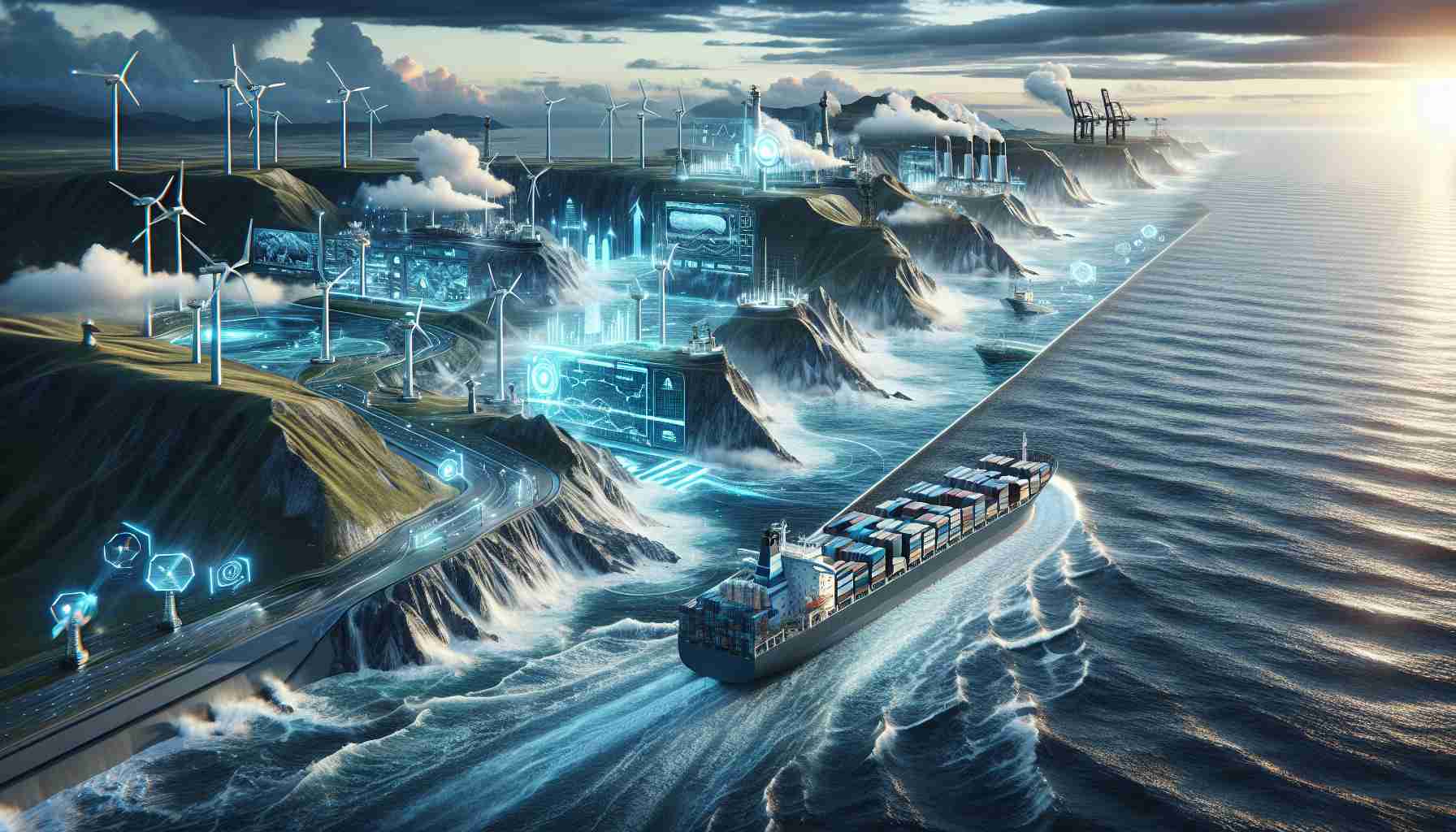
Recent maritime accidents involving ships and commercial vessels running aground have raised alarms about the safety of operations in shallow coastal waters. These incidents reveal the pressing need for precise water depth data in areas that are often inadequately charted. To address this issue, TCarta Marine has developed an innovative and eco-friendly method that leverages Earth Observation (EO) satellites to deliver accurate measurements of water depths in near-shore environments.
The challenge of obtaining high-quality water depth data in shallow areas has historically posed significant risks and costs. Traditional methods often rely on ships or aircraft, which can be perilous, particularly in remote or contested territories. The situation is further complicated as both military vessels and eco-tourism operations venture into less familiar waters.
For over a decade, TCarta has pioneered the use of Satellite Derived Bathymetry (SDB), which utilizes advanced physics-based algorithms to analyze optical images from commercial satellites. This technique measures the light reflected off the seabed to determine water depth, achieving impressive accuracy in clear conditions.
TCarta’s mapping efforts have successfully covered nearly one third of the world’s coastlines, providing customized and standardized bathymetric data. Their flagship product, the Global Satellite Derived Bathymetry (G-SDB), offers detailed insights to identify hazardous coastal features, proving invaluable for safe navigation in critical regions around the globe. Access to this vital data is available directly for both government and commercial entities through TCarta’s platforms.
Innovative Solutions for Coastal Navigation Risks: Exploring Emerging Technologies
Maritime navigation in coastal areas remains fraught with challenges, primarily due to shallow waters and unpredictable environmental conditions. As vessels increasingly navigate through these vulnerable zones, there is a growing urgency to explore and implement innovative solutions that enhance safety and reduce risks associated with coastal navigation.
What are the key questions surrounding innovative solutions for coastal navigation risks?
1. How can satellite technology improve coastal navigation?
Satellite technology, particularly Satellite Derived Bathymetry (SDB), offers enhanced mapping abilities that are crucial for navigating shallow waters. By analyzing high-resolution satellite imagery, vessels can receive updated data on water depths and seabed features, significantly improving situational awareness for mariners.
2. What role do autonomous underwater vehicles (AUVs) play in coastal navigation?
AUVs are increasingly being deployed for hydrographic surveying and environmental monitoring, providing real-time data that can be integrated into navigational systems. Their ability to operate in shallow and complex environments complements satellite data, offering a thorough understanding of coastal conditions.
3. Can collaborative technologies improve data sharing among maritime users?
Yes, platforms that facilitate real-time data sharing among maritime operators can greatly enhance operational safety. Such collaborations allow vessels to access a centralized database of navigational hazards, meteorological conditions, and water depth measurements.
What are the main challenges and controversies associated with these innovative solutions?
– Data Accuracy and Accessibility: While SDB provides valuable information, its accuracy can be influenced by environmental factors such as water turbidity and sunlight conditions. Ensuring consistent accuracy and timeliness of data across various regions is a critical challenge.
– Technological Adoption: Resistance to adopting new technologies within the maritime industry can hinder advances in navigation safety. Economic considerations, lack of training, and skepticism about new methods all contribute to slow uptake.
– Environmental Concerns: The deployment of AUVs and other technologies can impact marine ecosystems. There are concerns surrounding noise pollution, disturbances to wildlife, and potential accidents in sensitive areas, necessitating an environmental assessment for new initiatives.
Advantages and Disadvantages of Innovative Coastal Navigation Solutions
Advantages:
– Improved Safety: More accurate navigation data minimizes the risk of accidents caused by grounding or collisions in shallow waters, fostering greater safety for commercial and recreational vessels alike.
– Cost Efficiency: Implementing satellite and AUV technologies can reduce the costs associated with traditional survey methods, making maritime operations more economical.
– Environmental Impact: Such technologies often facilitate more responsible navigation and can help identify sensitive ecological areas, promoting better conservation practices.
Disadvantages:
– Initial Investment: The upfront costs for integrating advanced technologies can be significant, which may deter smaller operators from participation.
– Dependence on Technology: Over-reliance on technological systems can lead to complacency among navigators, who may neglect fundamental seamanship skills.
– Data Security Risks: As maritime operations increasingly rely on digital solutions and data sharing, concerns around cybersecurity and data integrity become paramount.
By addressing these challenges and exploring the advantages of innovative navigation solutions, stakeholders in the maritime industry can enhance safety and sustainability in coastal operations.
For more information about advancements in maritime navigation, visit Maritime Administration and NASA for insights into satellite technologies.



